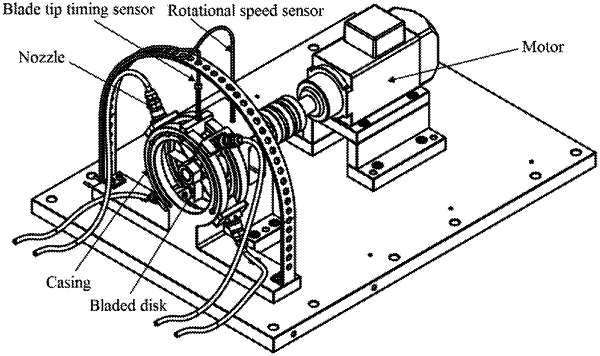| CPC F01D 21/003 (2013.01) [G01M 15/14 (2013.01); F05D 2260/83 (2013.01); F05D 2270/304 (2013.01); F05D 2270/821 (2013.01)] | 6 Claims |

|
1. A method for extracting a natural frequency difference between blades by a single blade tip timing sensor or uniformly distributed blade tip timing sensors, comprising the following steps:
a first step (S1): acquiring actual arrival time of a rotating blade by using a single blade tip timing sensor or uniformly distributed blade tip timing sensors, and converting a difference between theoretical arrival time and the actual arrival time into displacement data of a blade tip according to a rotational speed and a blade length of the rotating blade;
a second step (S2): selecting displacement data of blade tips of two rotating blades with the same blade length at the same rotational speed;
a third step (S3): intercepting the displacement data, performing discrete Fourier transform respectively, with a sampling frequency approximate to an average rotational speed, to obtain spectrum data; and
a fourth step (S4): respectively extracting, from the spectrum data, frequency remainders corresponding to the aliased natural frequencies of the two blades, and performing subtraction on the two frequency remainders to obtain the natural frequency difference between the two blades.
|